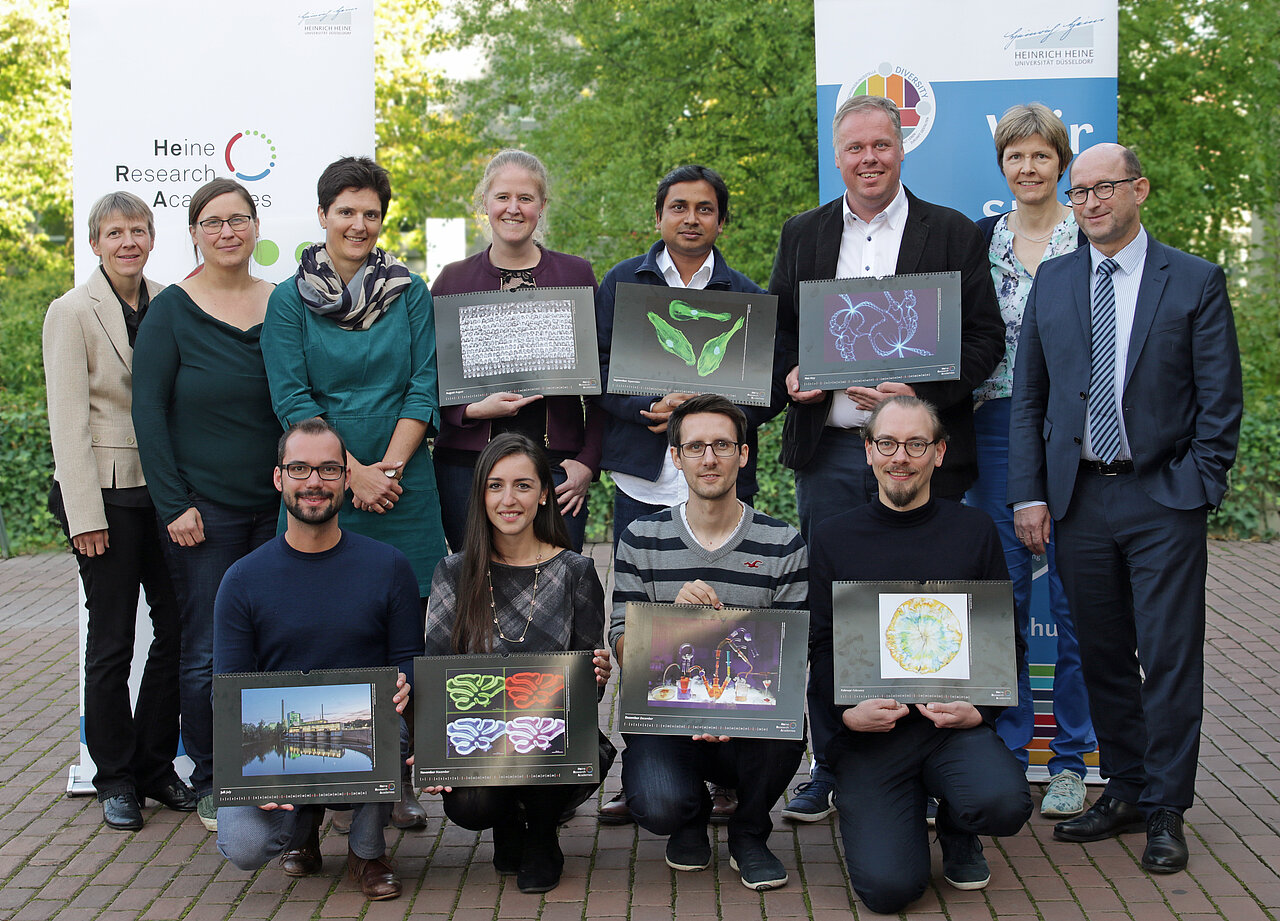"pART of Research" calendar 2020
Early career researchers of all HHU faculties were asked to show the world the diversity of research at HHU. This year’s theme of the calendar competition is "Creative Through Diversity". 19 images have been submitted and now it’s your turn to vote for the 12 most favorite images that will be displayed in the "pART of Research 2020" calendar of HeRA in cooperation with the Diversity Coordination Office.
The final calendar will be available for free from Heine Research Academies this fall.


"Diversity in Research/Objects-Places-People. Of 27 entries, twelve images were selected by 1400 voters and will now be printed in the "pART of Research" - calendar 2019 of Heine Research Academies.
From October 09, 2018, the calendar is available free of charge for all interested parties at Heine Research Academies (iGRAD, medRSD, philGRAD and JUNO), the HHU Diversity Coordination Office and at the House of the University in the city center.
Celly Warhol
Julia Sanwald
Institute for Biophysics/ Faculty of Math. and Nat. Scie.
"HEK293 cells expressing the HIV protein Nef fusioned to DsRed. Several z-stacks were merged to one image. Thereby it is possible to see the movement of the living cells during the imaging time (especially nice to see when looking at the cell in the upper middle)."
Crystals
Dr. Bernd M. Schmidt, Esther Nieland
Organic Chemistry and Macromolecular Chemistry/ Faculty of Math. and Nat. Scie.
"Slow evaporation of a solution containing a phosphane ligand used for catalysis furnished large colorless & sparkling crystals in a glass vial commonly used in chemical laboratories."
Neuronal Network
Laura Nimtz
IUF – Leibniz Research Institute for Environmental Medicine/ (Doctoral researcher of the) Faculty of Math. and Nat. Scie.
"The picture shows a staining of neurons (red) of a human neuronal network in vitro. The cell nuclei are shown in blue. Green structures represent synapses, which are essential for the transmission of electrical signals ."
Fascination LASER
Marie-Luise Hebestreit, Hilda Lartian
Institute for Physical Chemistry I/ Faculty of Math. and Nat. Scie.
"The photograph shows a dye laser. The desired wavelength range of the emission takes place via the choice of the dye. During the photographing Rhodamine 6G is used."
A quite normal day
Sara Ipakchi
Department of Philosophy / Faculty of Arts and Humanities
"I like to work with colours and graphics. Fortunately, I have a whiteboard in my office that fulfils this wish. I like to study philosophy, especially the topic of my dissertation makes me very happy. From the photo of my whiteboard you can find out what I am working on."
Crystalline Networks
Dr. Vera Vasylyeva-Shor
Inorganic Chemistry 1/ Faculty of Math. and Nat. Scie.
"Caffeine crystallises in of its known polymorphic forms giving a 3D-network after the complete solvent evaporation. This picture was taken under a polarised-light microscope."
Fiery Astrocytes
Eva Salveridou
Clinic for Endocrinology / (Doctoral researcher of the) Faculty of Math. and Nat. Scie.
"This immunofluorescence picture shows a red stained astrocytic-network of a primary mouse brain culture."
Colours of life
Jennifer Urbach, Leonie Drews
Institute for Biochemistry and Mol. Biology I / Medical Faculty
"The pictures show two tumor cell lines (astrocytoma and HeLa cells), whose structures (nucleus, mitochondrial network, certain proteins) were visualised through immunofluorescence or introduced fluorescent proteins. The pictures were taken with a confocal fluorescence microscope."
Japan in Brazil
Peter Bernardi
Department of Modern Japanese Studies / Faculty of Arts and Humanities
Biology meets Chemistry
Dr. Andreas Sebastian Klein
Institute of Bioorganic Chemistry / Faculty of Math. and Nat. Scie.
"The boundaries between disciplines are increasingly blurred these days and scientists work hand in hand in the laboratory. The picture shows my fantasy of interdisciplinary work between biologists and chemists on sustainable production and research of new natural compounds. These can be new pharmaceuticals or secure food for the world's population and often form the basis of the molecules of our future."
Biliary organoid mimics mini organ
Kathleen Deutschmann, Dr. Jan Stindt
Department of Gastroenterology, Hepatology and Infectious Diseases / Medical Faculty
Fire and Ice
Hannah Lena Seuken
Phoniatrics and Paediatric Audiology / Medical Faculty














